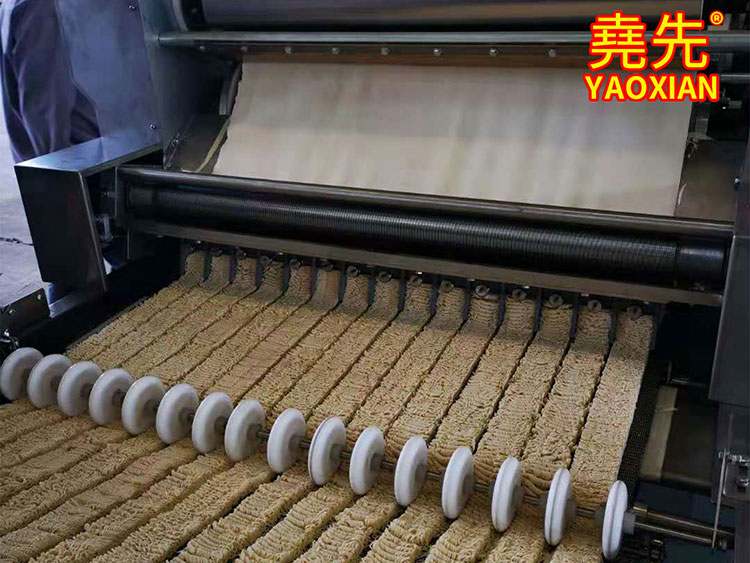Key components and stages typically involved in a noodle production line
2023-10-16
A noodle production line is a series of interconnected machines and equipment used for the automated and efficient production of noodles. It is commonly used in food manufacturing facilities and noodle production factories to streamline the noodle-making process and increase production capacity. Here are the key components and stages typically involved in a noodle production line:
1. Mixing and Kneading: The process begins with the mixing and kneading of noodle dough ingredients, including flour, water, and sometimes additives. This stage ensures proper hydration and blending of ingredients to achieve the desired dough consistency.
2. Dough Resting: The dough is then allowed to rest for a specific duration to develop the gluten structure and improve the texture of the noodles.
3. Sheet Formation: The rested dough is passed through a sheeter or rolling machine, where it is flattened into a sheet of a desired thickness. This sheet can be continuously fed into the subsequent stages of noodle production.
4. Cutting and Shaping: The sheet of dough is then cut and shaped into the desired noodle form. This can be done using various cutting mechanisms, such as rotary cutters or guillotine cutters, to create different noodle shapes like spaghetti, fettuccine, or udon.
5. Steaming or Pre-cooking: Some types of noodles, like ramen noodles, may undergo a pre-cooking or steaming process to partially cook the noodles and set their texture before the final cooking stage.
6. Drying: The cut and shaped noodles are typically dried to reduce moisture content and enhance their shelf life. This can be achieved through various methods, such as hot air drying, infrared drying, or freeze drying, depending on the specific noodle type and production requirements.
7. Cooling and Packaging: After drying, the noodles are cooled down to room temperature and then packaged. Packaging can be done using automated systems that weigh, portion, and seal the noodles in bags or other suitable containers.
8. Quality Control: Throughout the production line, quality control measures are implemented to ensure consistency, texture, and taste of the noodles. This can include visual inspection, sampling for laboratory testing, or the use of sensors and automation to detect and remove defective noodles.
Noodle production lines can be customized based on the specific requirements of different noodle varieties, such as wheat noodles, rice noodles, or instant noodles. The level of automation and the capacity of the production line can vary depending on the scale of the operation, from small-scale machines suitable for artisanal production to high-capacity industrial lines capable of mass production.
Efficient operation and maintenance of the noodle production line are crucial to ensure consistent quality and productivity. Proper cleaning, sanitation, and adherence to food safety standards are important to maintain hygienic and safe noodle production processes.



